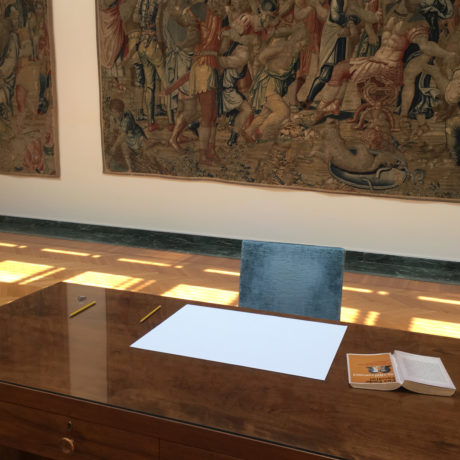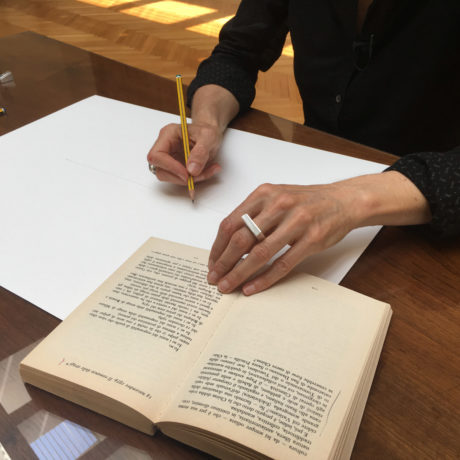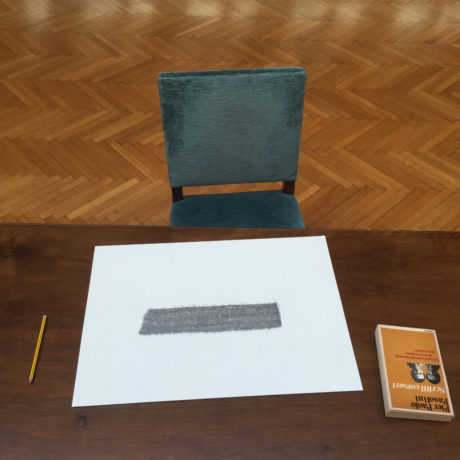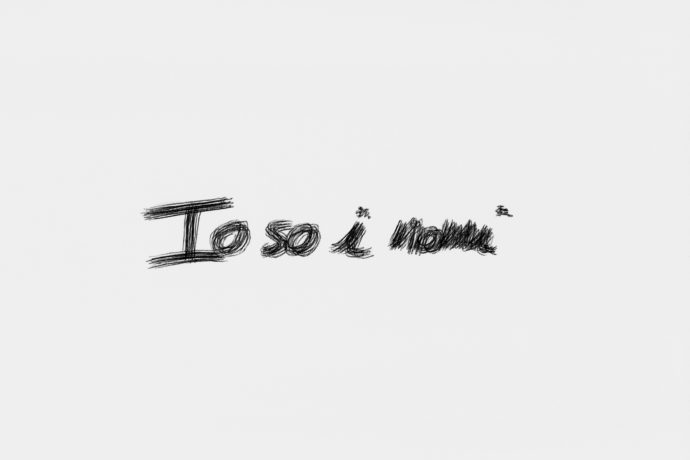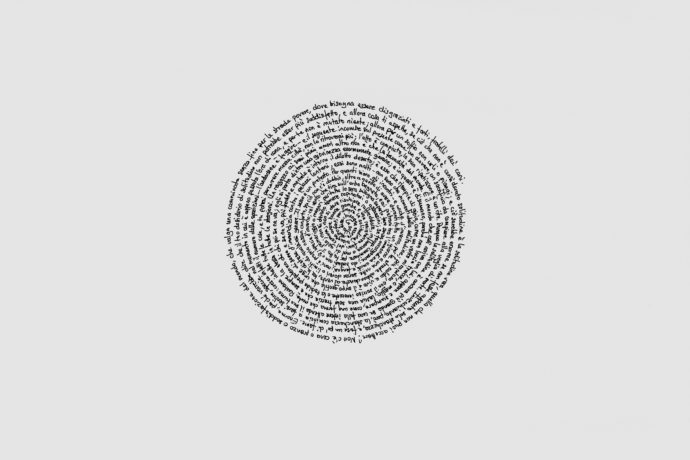•Writing Performances
Omaggio al romanzo delle stragi di Pier Paolo Pasolini_Academia Belgica_2019
These writing performances were created during the artist residency at the Academia Belgica in Rome, where I had the opportunity to stay and deepen my research on the question of “Pasolini’s heritage”. Here, my attention was focused on the latest writings of Pier Paolo Pasolini, especially Scritti corsari which is a collection of articles, published in the columns of Italian newspapers between 1973 and 1975.
The article, which I was mainly interested in, “Il romanzo delle stragi” (“The novel of the massacres”), published in Il Corriere della Sera on 14 November 1974, fiercely denounced the Italian politics of the time, described as a “strategy of tension”. In this important national daily newspaper, Pasolini dared to say on the front page : “I know the names of those responsible for the Milan massacre… I know the names of those responsible for the massacres in Brescia and Bologna… but I have no proof or clues…” He had become more and more scomodo, as the Italians would say, he was an inconvenient provocateur who pronounced, loud and clear, the embezzlements and corruptions of his country…
These articles, like those of 1975 collected in the Lettere luterane, are breathtakingly contemporary. Some of them are for me a kind of prologue to what he wanted to unveil in his last novel Petrolio. Unfortunately, some months later he was savagely murdered and silenced forever.
In this performance omaggio al romanzo delle stragi di Pier Paolo Pasolini, I write out the entire Italian article for about two hours, reading aloud, word for word, concentrating on the writing that advances blindly. His strong, powerful words are traced on a single line or a few, either in graphite pencil or in black or dark red ink. Gestures and jerky reading set the rhythm and guide the handwriting, applying more or less pressure, allowing the various graphic forms to thus compose spontaneously. The lines overlap, the words, one after the other, cover each other, hiding the meaning to become woven lines, stripes of imprints… The writing becomes a trace and the gesture an echo of what Pasolini evoked.
The piece entitled Solitudine di Pier Paolo Pasolini, also unfolds in the form of experimental writing, spiralling from the inside out. I quote his magnificent poem entitled “Versi da testamento”, published in Trasumanar e organizzar in 1971, in which he described his loneliness. In it, I reveal the text through a spiral, the writing develops by turning on itself, symbolizing a kind of introspection, of contemplation, which this feeling invites to ; in black ink the syllables slowly follow one another and reveal this delightful and painful poetry.
These works on paper were exhibited at the Academia Belgica in Rome in June 2019 (see details here )
Ces écritures performées ont été réalisées pendant la résidence d’artiste à l’Academia Belgica à Rome, où j’ai eu l’opportunité de séjourner pour approfondir ma recherche sur la question “d’héritage pasolinien”. Ici, mon attention s’est concentrée sur les derniers écrits de Pier Paolo Pasolini, et tout particulièrement “Scritti corsari” qui est un recueil d’articles, qui furent publiés dans les colonnes des journaux italiens entre 1973 et 1975.
L’article, auquel je me suis principalement intéressée, “Il romanzo delle stragi” (“Le roman des massacres”), publié dans Il Corriere della Sera du 14 novembre 1974, dénonçait férocement la politique italienne de l’époque, qualifiée de “stratégie de la tension”. Dans ce quotidien national très largement diffusé, Pasolini osait dire en première page : “Je sais les noms des responsables du massacre de Milan… Je sais les noms des responsables des massacres de Brescia et de Bologne… mais je n’ai ni preuves ni indices…” Il était devenu de plus en plus “scomodo”, comme disent les Italiens, il était un gênant provocateur qui prononçait, haut et fort, les malversations, les corruptions de son pays…
Ces articles, tout comme ceux de 1975 rassemblés dans les “Lettere luterane”, sont d’une contemporanéité époustouflante. Certains sont pour moi comme une forme de prologue, à ce qu’il voulait dévoiler dans son dernier roman “Petrolio”. Malheureusement, quelques mois plus tard, il fut sauvagement assassiné et réduit au silence à tout jamais.
Dans cette écriture performée que j’intitule “omaggio al romanzo delle stragi di Pier Paolo Pasolini”, j’écris l’entièreté de l’article italien pendant deux heures environ, lisant à haute voix, mot à mot, concentrée sur l’écriture qui avance aveuglément. Ses paroles fortes, très fortes, sont retracées sur une seule ligne ou quelques-unes, soit au crayon graphite, soit à l’encre noire ou rouge sombre. Le geste et la lecture saccadée rythment et guident l’écriture plus ou moins appuyée, les diverses formes graphiques se composent ainsi spontanément. Les lignes se chevauchent, les mots, les uns à la suite des autres se recouvrent, cachent le sens pour devenir lignes tissées, bandeaux d’empreintes… L’écriture devient trace et le geste, un écho à ce qu’évoquait Pasolini.
La pièce intitulée “Solitudine di Pier Paolo Pasolini”, se déploie également sous forme d’écriture expérimentale, en spirale allant de l’intérieur vers l’extérieur. Je cite son magnifique poème intitulé “Versi da testamento”, publié dans “Trasumanar e organizzar” en 1971, où il décrivait sa solitude.
Ici, je révèle le texte par une spirale, l’écriture se développe en tournant sur elle-même, elle symbolise une forme d’introspection, de recueillement auquel invite ce sentiment ; les syllabes s’enchaînent lentement à l’encre noire et révèlent doucement cette délicieuse et douloureuse poésie.
Ces oeuvres sur papier ont été exposées à l’Academia Belgica à Rome en juin 2019 (voir les détails ici )
artist residency at the Academia Belgica in Rome, with the support of Wallonie-Bruxelles International
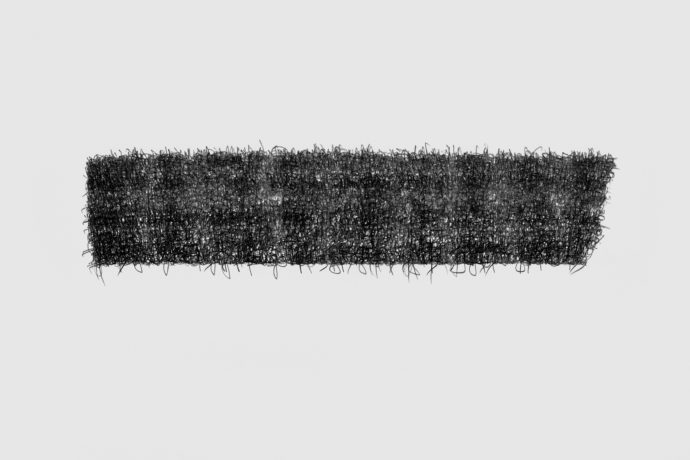
<i>Omaggio al romanzo delle stragi di Pier Paolo Pasolini_n°8</i>, graphite on paper Accademia Fabriano, 200g, aluminum frame, , 60x42 cm, 2019
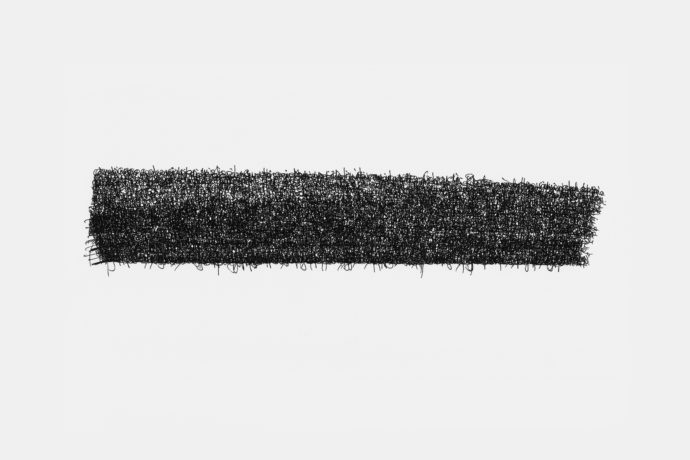
<i>Omaggio al romanzo delle stragi di Pier Paolo Pasolini_n°3</i>, black ink on paper Accademia Fabriano, 200g, aluminum frame, , 60x42 cm, 2019
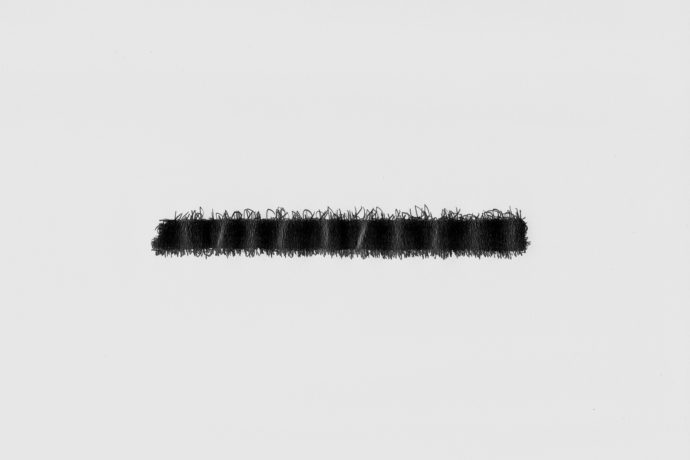
<i>Omaggio al romanzo delle stragi di Pier Paolo Pasolini_n°5</i>, graphite on paper Accademia Fabriano, 200g, aluminum frame, 42x60 cm, 2019
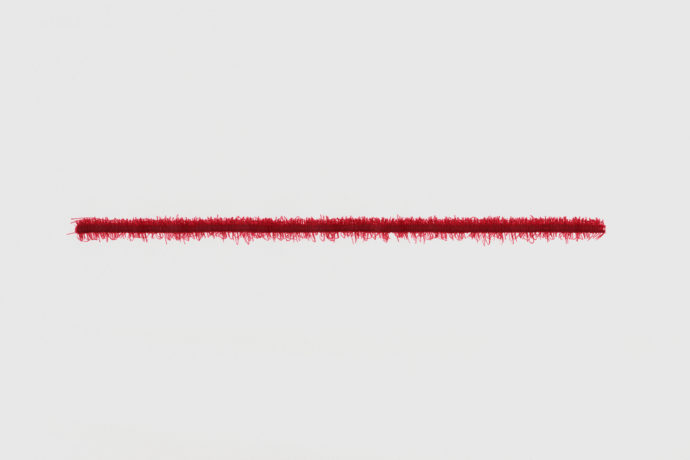
<i>Omaggio al romanzo delle stragi di Pier Paolo Pasolini_n°4A</i>, red ink on paper Accademia Fabriano, 200g, aluminum frame, 42x60 cm, 2019
